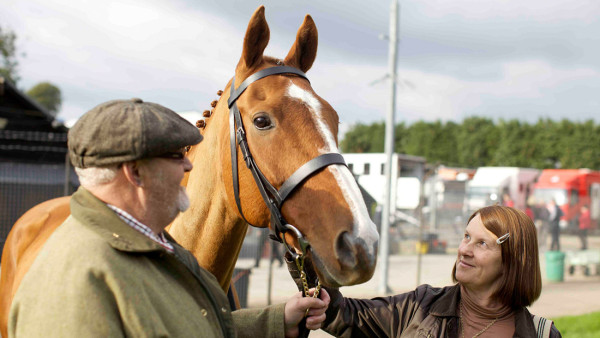Horse racing is a rich man’s sport, and for centuries in Britain, it was the preserve of the landed gentry. So imagine what happens when the working-class inhabitants of a depressed coal mining village in Wales band together, raise a prize-winning steed and break class barriers in the process.
In Dark Horse, a spirited documentary by Louise Osmond scheduled to open in Canada on May 20, Jan, a middle-aged bar maid, decides to breed a race horse and persuades 30 friends and neighbors to join a syndicate to finance the risky venture.
This is a hobby that only affluent members of society can afford, but Jan is undaunted by the challenge, even though she knows precious little about the sport.
She and her supporters purchase a mare. The mare gives birth to a brown gelding, Dream Alliance. After a trainer teaches Dream Alliance “racing manners,” the horse is entered in a series of races. The novelty and excitement unite the village.

Eventually, Dream Alliance wins an important race and suddenly becomes a contender. But in a subsequent race, Dream Alliance pulls a tendon. The owners spend a small fortune to mend his wounds through stem cell surgery. Cost is not a factor in their decision.”He was like one of the family,” says Jan’s gap-toothed husband.
After a period of convalescence, Dream Alliance roars back, prompting a newspaper headline to blare, “Nags to riches.” As a result, Jan finds herself in the limelight as a budding celebrity.
Rousing and inspirational, Dark Horse is a film that makes the blood race.